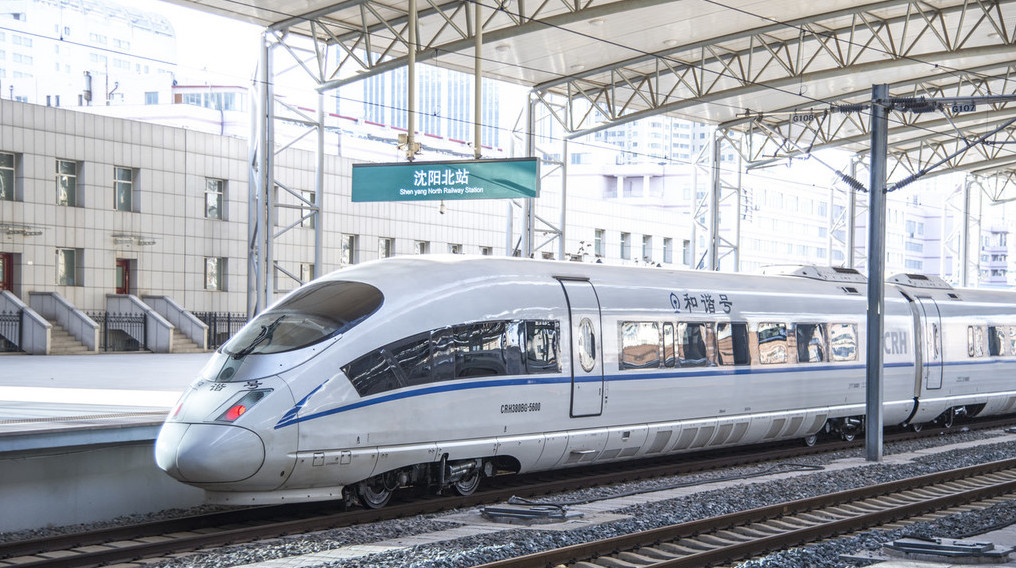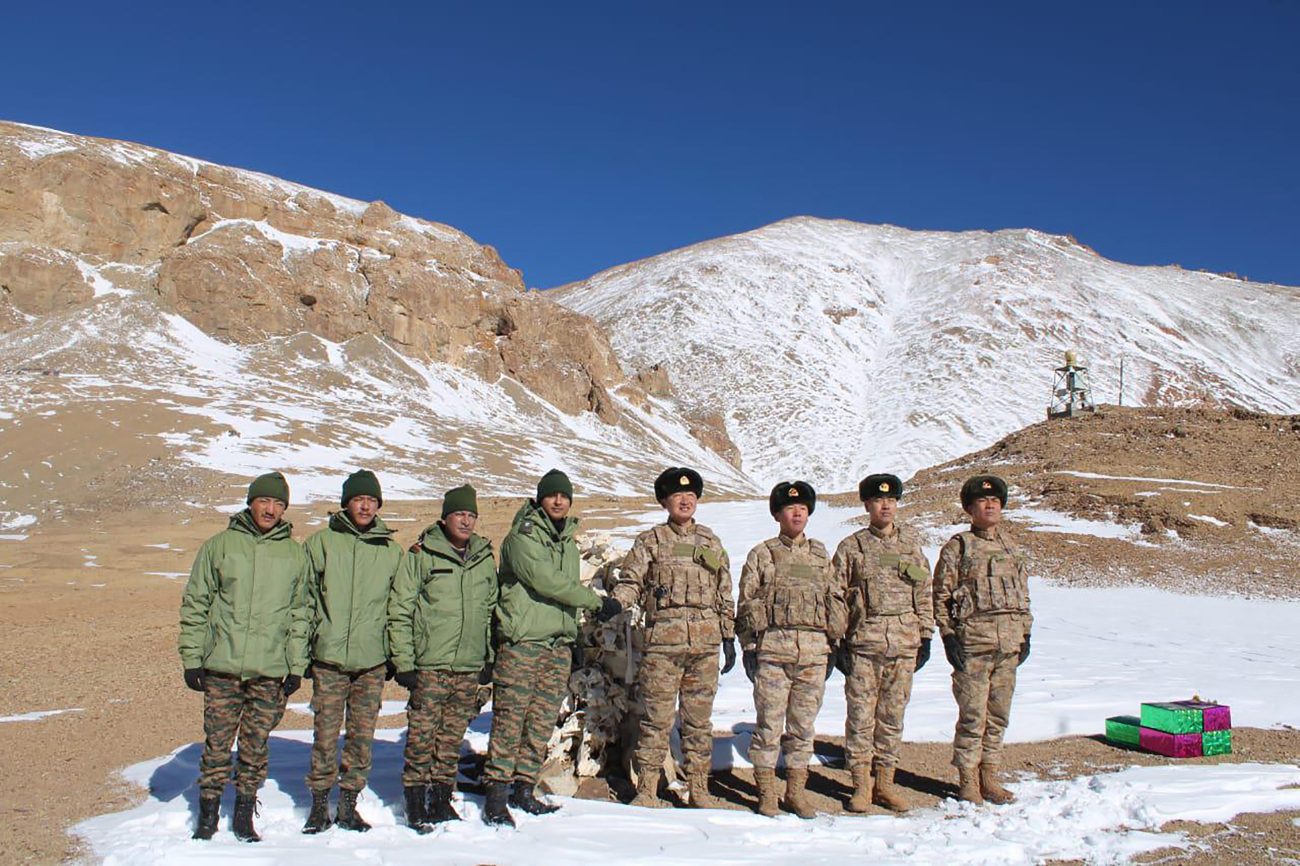Even as New Delhi and Beijing are mending ties, China is quietly moving ahead with a massive infrastructure push right along India’s doorstep.
Chinese media reports say the project is one of the most ambitious rail links attempted in the region, connecting Xinjiang with Tibet, cutting through Aksai Chin, and running near sections of the Line of Actual Control (LAC) with India.
A Railway Across The Roof Of The World
At the heart of this plan is the Xinjiang-Tibet railway, one of China’s most ambitious rail projects to date. Stretching nearly 5,000 kilometres, it will connect Shigatse, Tibet’s second largest city, to Hotan in Xinjiang, while linking up with the existing railway network in Lhasa.
Once complete, it will form a 2,000 km strategic corridor between China’s northwest and southwest. For India, this means a direct rail artery cutting through sensitive terrain not far from the border.
The geography of the route underlines its scale. The railway will snake across the Kunlun, Karakoram, Kailash, and Himalayan ranges, climbing to an average altitude of more than 4,500 metres. To make this possible, about two-thirds of the line will be made up of bridges and tunnels.
U.S. To Acquire Shahed-136 Drone Clones; Aims To Test Counter-Drone Systems Against Kamikaze Threats
The train will traverse glaciers, frozen rivers, and permafrost zones, where temperatures in winter drop to minus 40 degrees Celsius and oxygen levels are less than half of what they are in most inland regions of China.
Chinese engineers face daunting challenges. Harsh weather, accelerated wear on machinery, sky-high logistics costs, and the environmental sensitivities of the plateau are all factors that could slow progress.
Construction is expected to begin this November and will take about a decade to finish. Trains are planned to run at speeds of 120/160 km/h.
This project has been in the making for years. The idea was first included in China’s “Medium and Long-Term Railway Network Plan” back in 2008. Since then, milestones have included the launch of survey and design work for the Hotan-Shigatse section in May 2022.
By April this year, officials from China’s Ministry of Transport confirmed that work would officially start in 2025.
The Price Tag Behind The Railway
China has officially set up a new company to take charge of the Xinjiang-Tibet railway. Called the Xinjiang-Tibet Railway Company (XTRC), it is fully owned by the state-run China State Railway Group and has been registered with a starting capital of 95 billion yuan, roughly 13.2 billion dollars.
That $13.2 billion, however, is only the opening figure. It represents initial funding, not the actual cost of the project.
For comparison, the 1,800-kilometer Sichuan-Tibet railway ended up costing about 45 billion dollars. Given that the Xinjiang-Tibet line is more than twice as long and will cross far harsher terrain, the eventual bill is likely to be much higher.
Even at this early stage, analysts already call it the world’s most expensive and technically challenging railway project. To put things in perspective, Russia’s high-speed line between Moscow and St. Petersburg, currently one of the costliest rail projects on record, runs just 679 kilometers and carries a price tag of about 25 billion dollars. The Xinjiang-Tibet line could easily surpass that several times over once completed.
Chinese reports are clear that the railway is not being built for commercial gain. The terrain it cuts across is sparsely populated and has little economic activity. Instead, the project is about strategy, securing Beijing’s hold over Tibet and Xinjiang while giving the military faster access to border regions.
Why Is China Building This Railway?
On paper, Beijing says the Xinjiang-Tibet railway will boost tourism, trade, and local development. The newly registered Xinjiang-Tibet Railway Company even lists businesses like real estate, catering, and international projects in its portfolio. But the strategic intent is far more telling.
The line will give the People’s Liberation Army (PLA) quicker access to Tibet from its Chongqing-based 13th Group Army, allowing faster movement of troops and supplies to the Himalayan frontier.
Chinese officials openly call it part of “major national strategies” to strengthen key transport corridors into Tibet and Xinjiang, two regions that remain politically sensitive for Beijing.
The project also serves Beijing’s demographic goals. Xinjiang is already an example of how large-scale Han migration can shift the balance. In 1953, Uyghurs made up three-fourths of the region’s population. By 2020, the Han share had risen to about 42 percent.
Tibet remains overwhelmingly Tibetan, but Beijing hopes new rail links, towns, and factories will draw more Han settlers to the plateau.
China’s Expanding Rail Grip On Tibet
China first pushed its railway into Tibet in 2006 with the Qinghai-Lhasa line. At the time, it was hailed as an engineering wonder, the highest railway in the world, with more than 960 kilometers running above 4,000 meters. But for India, it was also the start of Beijing physically binding Tibet closer to the Chinese heartland.
The new Xinjiang-Tibet line is part of a wider plan. Beijing has mapped out four major railways to link Tibet with the rest of the country – through Qinghai, Sichuan, Yunnan, and now Xinjiang.
Only the Qinghai-Tibet railway is fully operational. The others are still under construction, with price tags running into hundreds of billions of yuan. The Sichuan line alone is expected to open only by 2032.
China calls Tibet ‘Xizang’ in its official documents, underscoring its attempt to Sinicize the region not just politically, but linguistically. Railways play a central role in that effort. Faster trains mean not only easier access for tourists to sites like Mount Kailash or Manasarovar, but also quicker movement of troops, settlers, and resources.
At home, China boasts the world’s largest high-speed rail network, over 40,000 kilometers by 2022, more than double that of the next ten countries combined. By contrast, the United States, which still runs the world’s largest overall rail network, has less than a thousand kilometers of high-speed lines. Beijing wants its railways to reach nearly every city with more than 200,000 people.
But this ambition comes at a heavy price. China Railway Group, the state giant driving the expansion, is drowning in debt. By last year, its borrowings had crossed 6 trillion yuan ($846 billion) while profits were razor-thin. The strain has forced Beijing to do something rare in its tightly controlled system. Raise fares on major bullet train routes to claw back some revenue.
The financial burden is Beijing’s problem, but the strategic outcome is India’s concern.

Iran’s Nuke Reactor Attack Spurs China; Ditches German, French PLCs For Domestic Tech At Xiluodu Dam
Aksai Chin: Tracks Through Disputed Land
One of the most striking parts of the Xinjiang-Tibet railway is that it cuts through Aksai Chin, a region that is part of eastern Ladakh but has been under Chinese occupation since the 1950s.
The tracks will run dangerously close to the Line of Actual Control, the disputed frontier where Indian and Chinese troops have clashed in recent years.
For Beijing, this railway network is a force multiplier. The line will allow the PLA to move troops and heavy equipment to the LAC much faster than before. At present, many stretches of the frontier are remote and underdeveloped compared to the rest of China. Once this railway is complete, that weakness disappears.
China frames the project as a way to boost trade and connect remote regions. But for India, the military dimension is impossible to ignore.

The Tibet Autonomous Region is already well linked by highways, airports, and railways, including a high-speed line that runs close to the Arunachal border. With the Xinjiang-Tibet link, China is stitching together a web of infrastructure that doubles as a military logistics grid.
Observers argue that this is part of a broader playbook. China presents such projects as economic development, but in reality, they tighten Beijing’s control over disputed areas and strengthen its hand in any future conflict.
The same strategy can be seen in the creation of ‘border defence villages’, where civilians are encouraged to settle and maintain a permanent presence, gradually shifting the balance on the ground without triggering a large-scale confrontation.
This railway deepens China’s ability to reinforce troops at short notice, making standoffs like Galwan or Doklam even riskier. It also signals Beijing’s intent to secure long-term dominance along the Himalayan frontier, under the cover of connectivity and development.
The challenge for New Delhi is, while Beijing lays down steel tracks across disputed land, India must accelerate its own border infrastructure, strengthen defence partnerships, and stay alert to China’s creeping attempts to redraw facts on the ground.
The Double Track Of Relations
What makes China’s push for the Xinjiang-Tibet railway even more significant is its timing. The plan surfaces just as New Delhi and Beijing have begun cautiously resetting ties after more than four years of tension sparked by the Ladakh standoff.
That confrontation, which began in the summer of 2020, saw Chinese troops cross into eastern Ladakh and culminated in the deadly Galwan Valley clash. Aksai Chin, where part of the railway is expected to run, remains central to that dispute.
Since late last year, relations have begun to inch upward. The turning point came when Prime Minister Narendra Modi met President Xi Jinping on the sidelines of the BRICS summit in Russia. Since then, both countries have reopened limited trade through selected border posts and even resumed discussions on restoring direct flights.
One of the clearest signals of a thaw has been the decision to restart the Kailash Mansarovar Yatra in 2025, after a five-year gap. For many in India, the pilgrimage holds deep spiritual meaning, and its resumption is seen as a step toward easing the bitterness of recent years.
Diplomacy is also picking up pace. Modi is scheduled to travel to Tianjin later this month for the Shanghai Cooperation Organisation summit, his first visit to China since 2019.
Beijing has publicly welcomed his presence, calling the SCO a platform of ‘friendship and solidarity’. His trip follows a series of visits by Defence Minister Rajnath Singh, National Security Advisor Ajit Doval, and External Affairs Minister S. Jaishankar, who have all been engaging their Chinese counterparts in recent months.
Yet, beneath these gestures of normalisation, India cannot ignore that Beijing is laying tracks through disputed territory. The dual reality defines India–China ties today: attempts at dialogue and cooperation on one hand, and on the other, China’s relentless push to strengthen its military position along the Himalayan frontier.
What Is India Doing?
New Delhi is not standing still while Beijing lays tracks through contested land. India has stepped up its own infrastructure drive along the Line of Actual Control to narrow the gap.
The most critical project is the Darbuk – Shyok – Daulat Beg Oldie (DSDBO) road, which serves as the lifeline to the Galwan Valley and the northernmost military outpost near the Karakoram Pass.
This route is being reinforced to carry heavy armour, including tanks and missile launchers, ensuring India can respond quickly if tensions flare.
At the same time, India is working on a 130-kilometre alternative road that will run out of sight of Chinese patrols.
This stealthier link is designed to reduce reliance on the exposed DSDBO stretch and give the military greater flexibility in moving troops and supplies.
To push projects faster, the government has deployed bigger workforces, raised wages to attract labour in remote high altitude areas, and invested in advanced surveillance and logistics networks. The aim is to cut response times in a crisis and strengthen India’s hand against China’s growing military presence along the frontier.
For India, building roads is not just about connectivity; it is about ensuring that the next time Beijing tries to change the status quo, New Delhi is better prepared to hold its ground.
- Shubhangi Palve is a defense and aerospace journalist. Before joining the EurAsian Times, she worked for ET Prime. She has over 15 years of extensive experience in the media industry, spanning print, electronic, and online domains.
- Contact the author at shubhapalve (at) gmail.com




